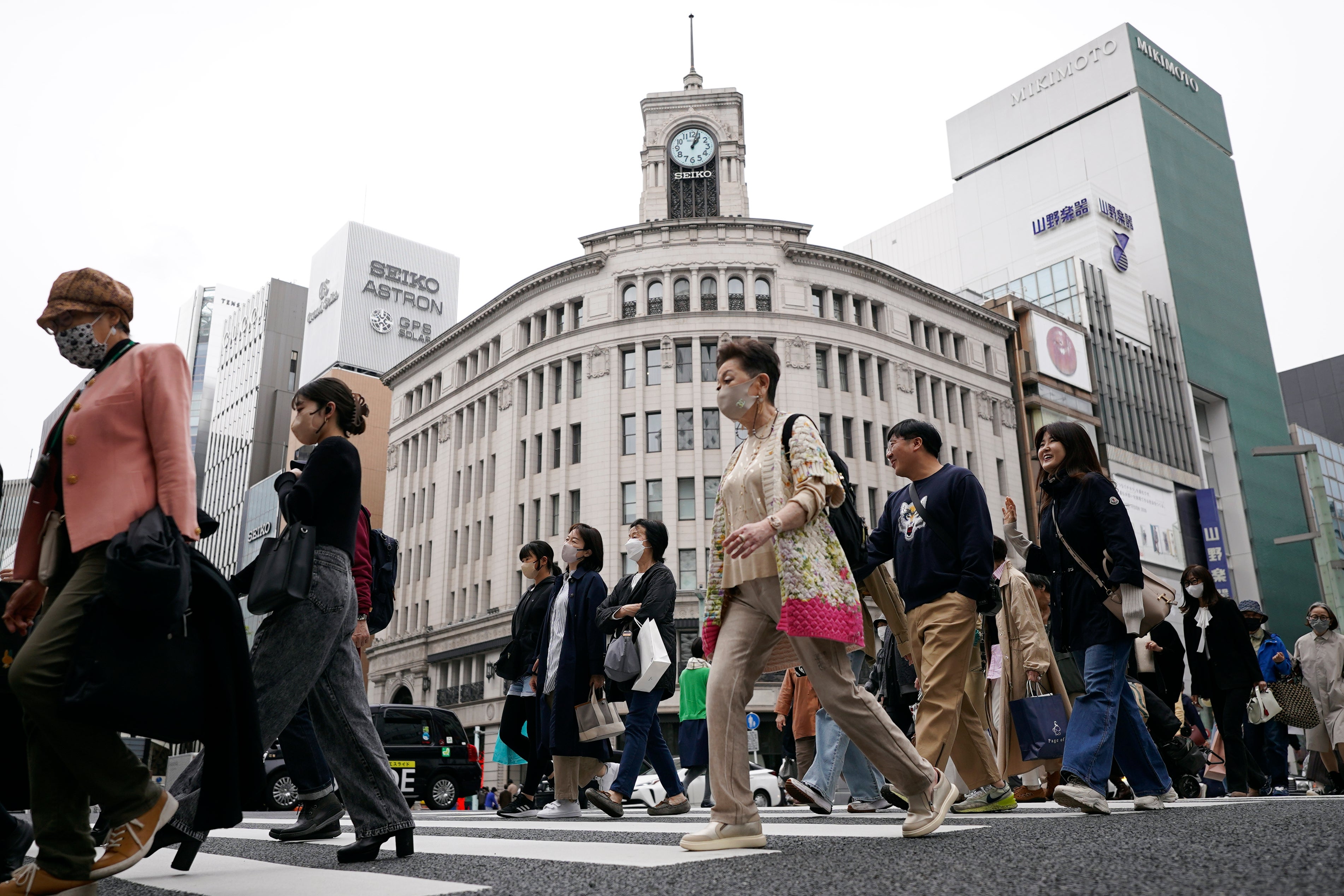Japan's economy sinks into contraction as spending, investment decline
Japan’s economy slipped into a contraction in the third quarter, decreasing at an annual pace of 2.1% as consumption and investments shrank

Your support helps us to tell the story
From reproductive rights to climate change to Big Tech, The Independent is on the ground when the story is developing. Whether it's investigating the financials of Elon Musk's pro-Trump PAC or producing our latest documentary, 'The A Word', which shines a light on the American women fighting for reproductive rights, we know how important it is to parse out the facts from the messaging.
At such a critical moment in US history, we need reporters on the ground. Your donation allows us to keep sending journalists to speak to both sides of the story.
The Independent is trusted by Americans across the entire political spectrum. And unlike many other quality news outlets, we choose not to lock Americans out of our reporting and analysis with paywalls. We believe quality journalism should be available to everyone, paid for by those who can afford it.
Your support makes all the difference.Japan’s economy slipped into a contraction in the third quarter, decreasing at an annual pace of 2.1% as consumption and investments shrank, the government reported Wednesday.
Real gross domestic product, which measures the total value of a nation’s products and services, fell 0.5% in the July-September period for the world’s third largest economy, the Cabinet Office said. That would produce a 2.1% drop if the quarter's performance continued for a full 12 months.
The downturn came after the economy grew a revised 3.7% in the first quarter and a revised 4.5% in the second quarter on an annualized basis, according to the government figures.
The third quarter's performance was far worse than what had been expected, according to the financial services company ING, which had forecast an annual contraction of 0.5%.
“Most of the miss in the consensus forecast came from weaker-than-expected domestic demand items, such as consumer spending, business investment and inventory accumulation,” Robert Carnell, ING's head of research for the Asia-Pacific area, said in a report.
Private consumption shrank an annualized 0.2% during the quarter, while corporate investment decreased 2.5%.
Economic activity in the previous two quarters got a boost from recovering exports and inbound tourism. Social restrictions related to the COVID-19 pandemic have gradually eased, allowing for more travel and a fix to the crimped supply chain for production.
Exports managed to eke out 0.5% growth in the latest quarter, in contrast to a 3.2% rise in the second quater. Auto exports have recovered after stalling over the shortage of computer chips and other parts. Also adding to exports was tourism revenue.
Public demand, which includes government spending, rose at an annual pace of 0.6% in the latest quarter.
Given the numbers, Japan’s central bank isn't likely to consider any move toward higher interest rates.
The Bank of Japan has taken a super-easy monetary policy for years, with zero or below-zero interest rates aimed at energizing an economy long beset by deflation, which reflects the stagnation that has plagued Japan with its aging and shrinking population.
Some analysts said the sharp contraction could be temporary.
Prime Minister Fumio Kishida has pushed a 17 trillion yen ($113 billion) stimulus package, including tax cuts and household subsidies. A supplementary budget for its funding recently won parliamentary approval.
___
Yuri Kageyama is on X, formerly Twitter: https://twitter.com/yurikageyama